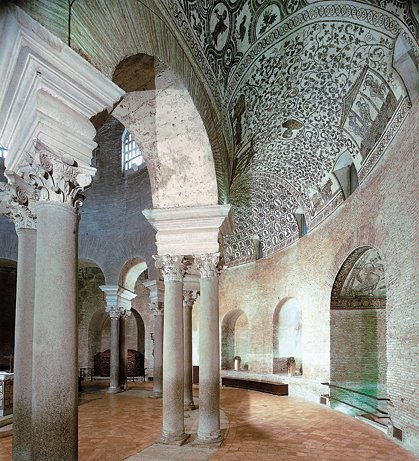247. Santa Costanza, Rome, c. 338-350 (Italy)
This masterpiece of late Antique architecture looks forward in many ways to the buildings of the Middle Ages. A domed, round-plan church, it originally appears to have been built in the reign of the Emperor Constantine as a mausoleum for his daughter Constantina. When the latter came to be venerated as a saint, the building was converted into a Christian place of worship. In contrast to the sumptuous interior, the exterior is of plain, arched brickwork. Its dome serves to focus attention on the central circular space of the building, 11 metres in diameter and illuminated by twelve clearstorey windows, where the sarcophagus would originally have been located. The dome rests on a tall drum, which in turn is supported on brick arches set on paired Corinthian columns of green and red marble; these serve to define a surrounding ambulatory. (An earlier outer ambulatory has disappeared.) It has been pointed out that this section is similar to that of a Roman basilica, in that it has lower aisles (i.e., the ambulatory) flanking a taller nave. The vaulting of the ambulatory space is covered in elaborate marble mosaics, foreshadowing the aesthetics of the nascent Byzantine style; a famous scene of grape harvest recalls both Bacchic mythology and early Christian iconography.
